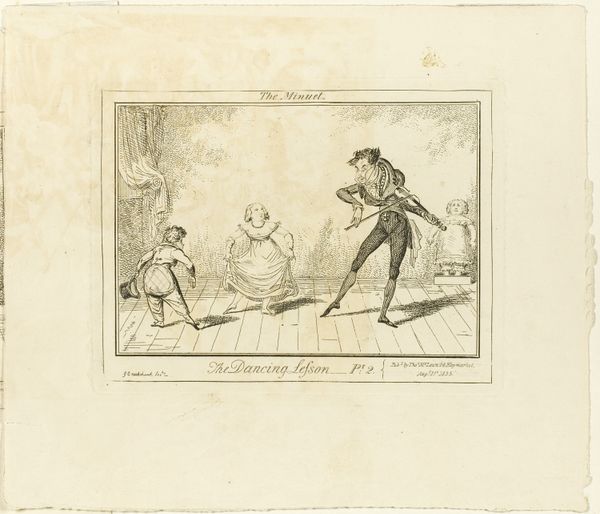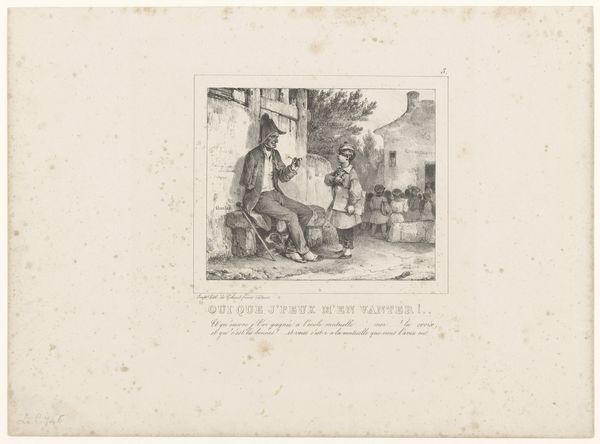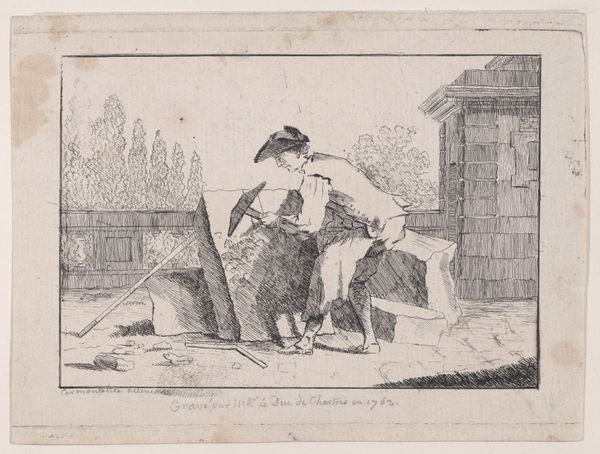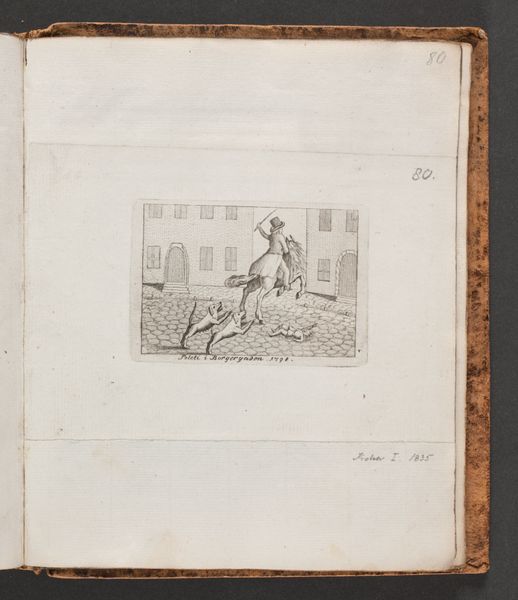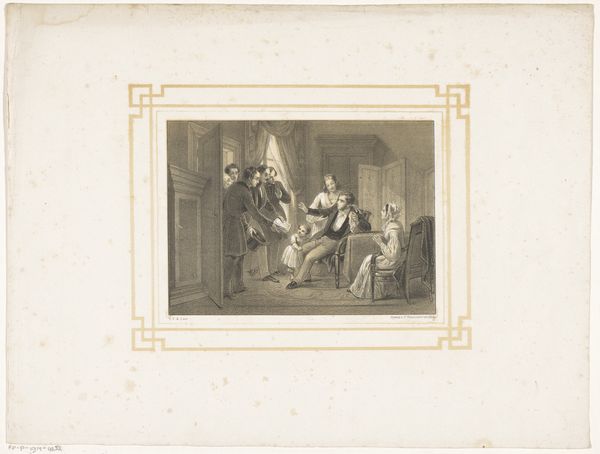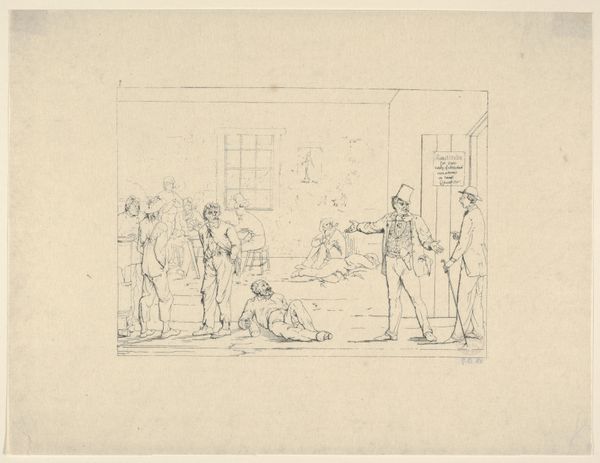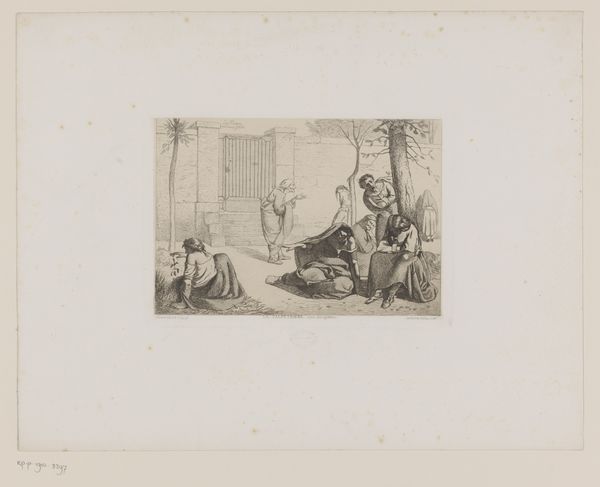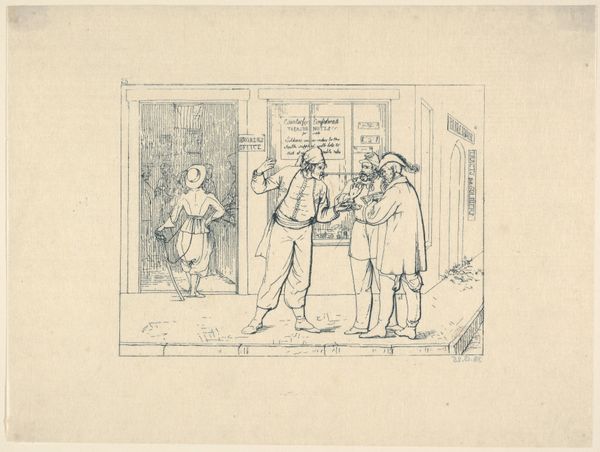
drawing, print, etching, paper
#
drawing
# print
#
etching
#
caricature
#
etching
#
figuration
#
paper
#
romanticism
#
line
#
genre-painting
Dimensions: 105 × 150 mm (image); 130 × 170 mm (plate); 205 × 235 mm (sheet)
Copyright: Public Domain
Curator: Editor: So, this is "The Dancing Lesson, Part 3: L'ete," a print by George Cruikshank from 1825. The etching feels surprisingly lighthearted for a work of social commentary. What strikes you when you look at this? Curator: The etching itself speaks volumes about the prevailing modes of artistic production and consumption during that era. Look at the crisp lines, achieved through meticulous labor, reproduced en masse for a growing market eager for accessible art. The satire embedded in the image also reflects societal tensions. Editor: Interesting. You’re focusing less on what it depicts and more on how it was made and circulated. Curator: Precisely! How else can we understand the significance of a work unless we examine the conditions that gave rise to its creation and dissemination? Consider the cost of materials, the labor involved, the intended audience – all these elements are integral to its meaning. It asks whether the social critique depicted in the etching reflect a shift towards new production systems? Editor: So, the humor we see isn't just for amusement? It's tied to these wider issues of class and consumerism. Curator: The act of satire itself is a product of its time. Its presence makes me consider how consumption patterns have shaped its trajectory. Do you see evidence of romantic ideals conflicting with this commercial context? Editor: Now that you mention it, yes. The almost grotesque exaggeration highlights that contrast. I suppose thinking about how this was made helps uncover a deeper layer. Curator: Indeed. Analyzing art through a material lens allows us to trace the story behind its creation and meaning.
Comments
No comments
Be the first to comment and join the conversation on the ultimate creative platform.
